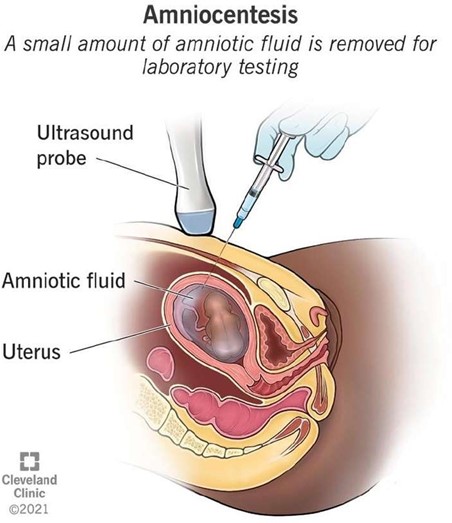A nurse is caring for a client who has hyperemesis gravidarum.
Which of the following laboratory tests should the nurse anticipate?
Rapid plasma reagin.
Prothrombin time.
Urine ketones.
Urine culture.
The Correct Answer is C
A nurse caring for a client who has hyperemesis gravidarum should anticipate urine ketones test.
Hyperemesis gravidarum is severe nausea and vomiting during pregnancy that results in dehydration, weight loss, and ketosis.
Urine ketones test is done to check for ketosis which is a sign of starvation 2.
Choice A, Rapid plasma reagin, is not an answer because it is a blood test used to screen for syphilis.
Choice B, Prothrombin time, is not an answer because it is a blood test used to measure how long it takes for blood to clot.
Choice D, Urine culture, is not an answer because it is a test used to detect and identify bacteria or yeast that may be causing a urinary tract infection.
Nursing Test Bank
Naxlex Comprehensive Predictor Exams
Related Questions
Correct Answer is A
Explanation
The nurse should inform the client that amniocentesis is a procedure that
determines if the baby has genetic or congenital disorders.

Choice B is not the best answer because amniocentesis is typically performed after 15 weeks of gestation.
Choice C is not the best answer because chorionic villus sampling (CVS) is a different procedure from amniocentesis.
Choice D is not the best answer because there is no age restriction for having an amniocentesis.
Correct Answer is A
Explanation
Baked chicken is a food that the nurse should recommend for a client who is at
32 weeks of gestation and has cholelithiasis to include in her diet.
Eating healthy fats, like those found in lean meats such as chicken, can help the gallbladder contract and empty on a regular basis.

Choice B is incorrect because French fries are not a food that the nurse should recommend for a client who is at 32 weeks of gestation and has cholelithiasis to include in her diet.
Unhealthy fats, like those often found in fried foods, should be avoided.
Choice C is incorrect because whole milk is not a food that the nurse should recommend for a client who is at 32 weeks of gestation and has cholelithiasis to include in her diet.
Unhealthy fats, like those often found in whole milk, should be avoided.
Choice D is incorrect because a bacon cheeseburger is not a food that the nurse should recommend for a client who is at 32 weeks of gestation and has cholelithiasis to include in her diet.
Unhealthy fats, like those often found in bacon and cheeseburgers, should be avoided.
Whether you are a student looking to ace your exams or a practicing nurse seeking to enhance your expertise , our nursing education contents will empower you with the confidence and competence to make a difference in the lives of patients and become a respected leader in the healthcare field.
Visit Naxlex, invest in your future and unlock endless possibilities with our unparalleled nursing education contents today
Report Wrong Answer on the Current Question
Do you disagree with the answer? If yes, what is your expected answer? Explain.
Kindly be descriptive with the issue you are facing.
